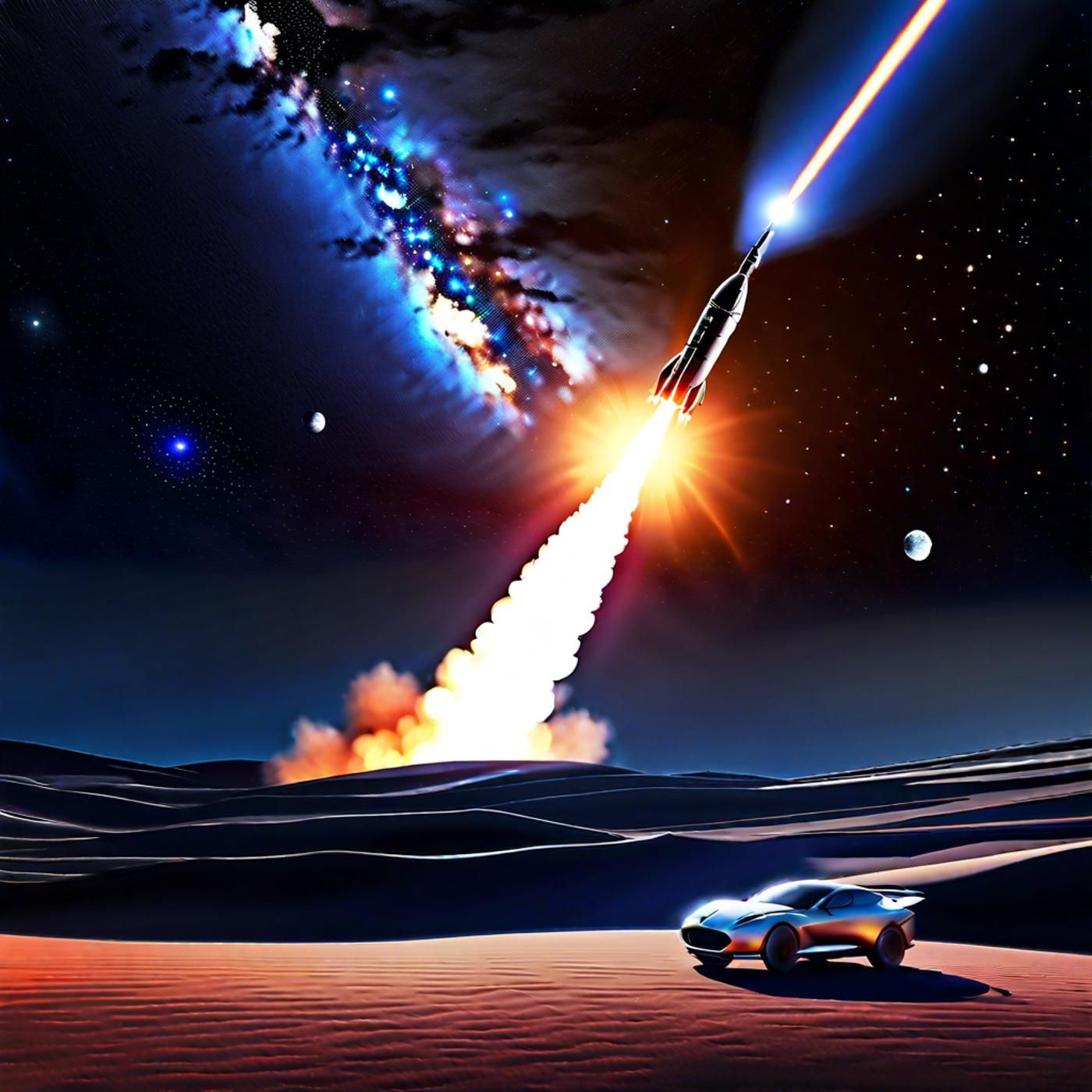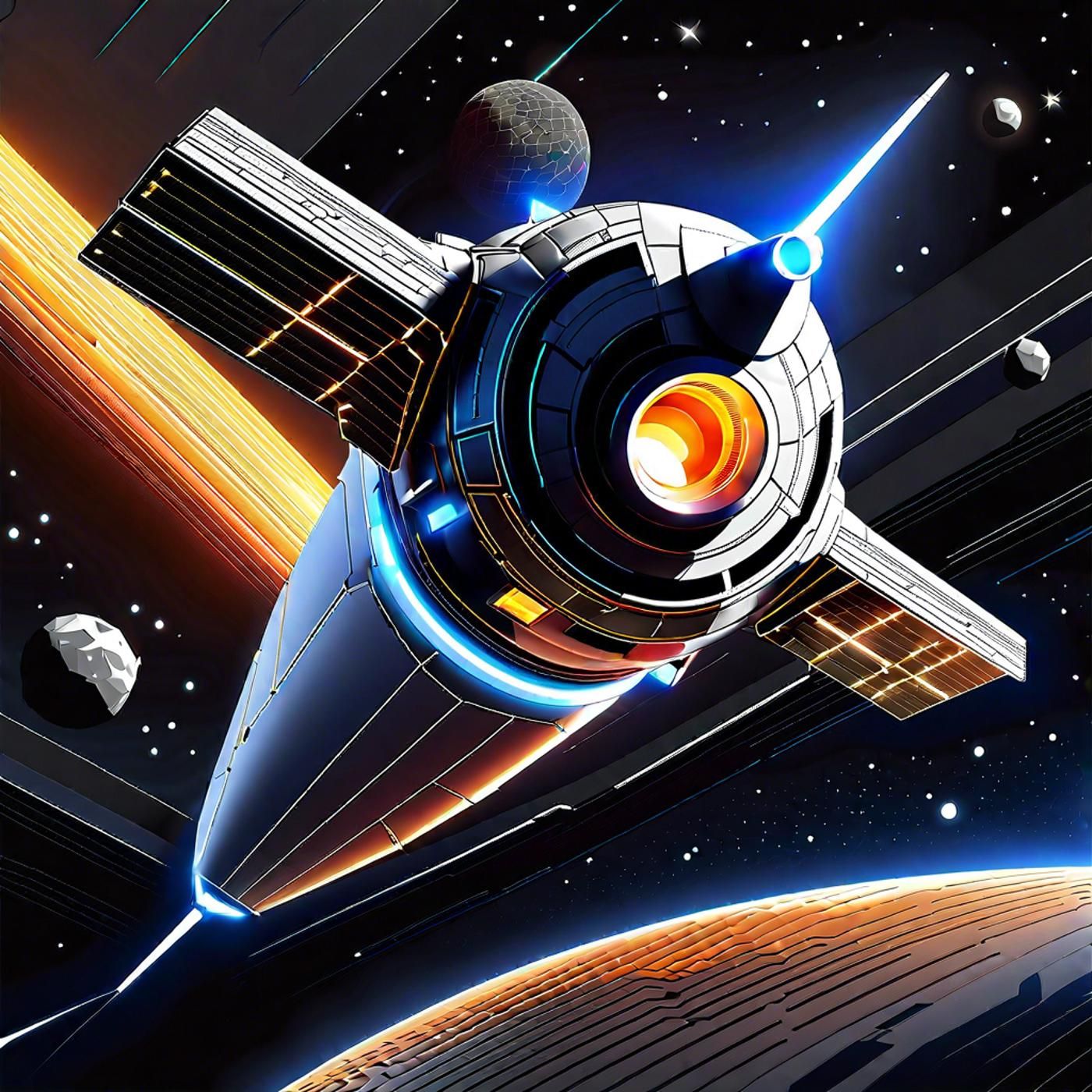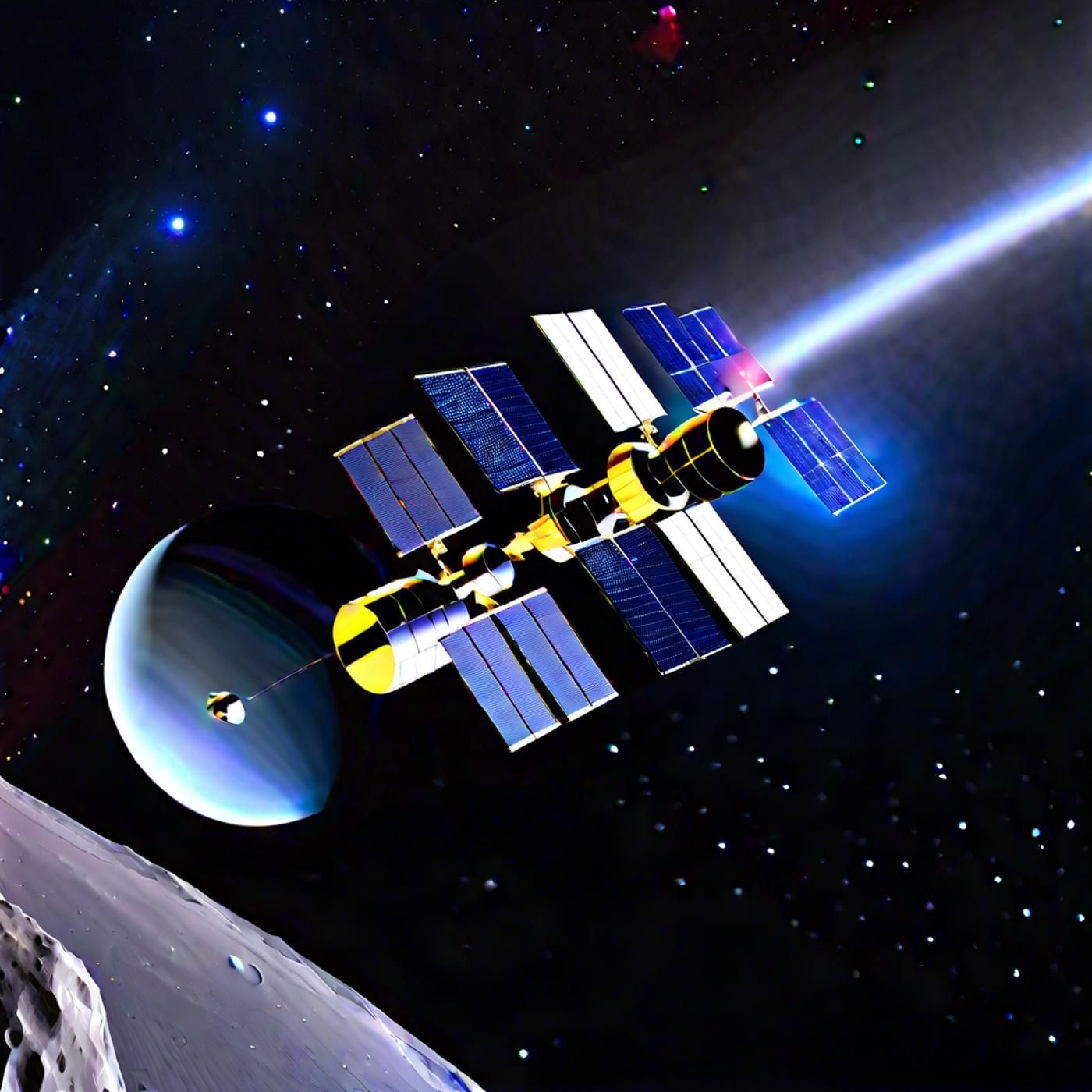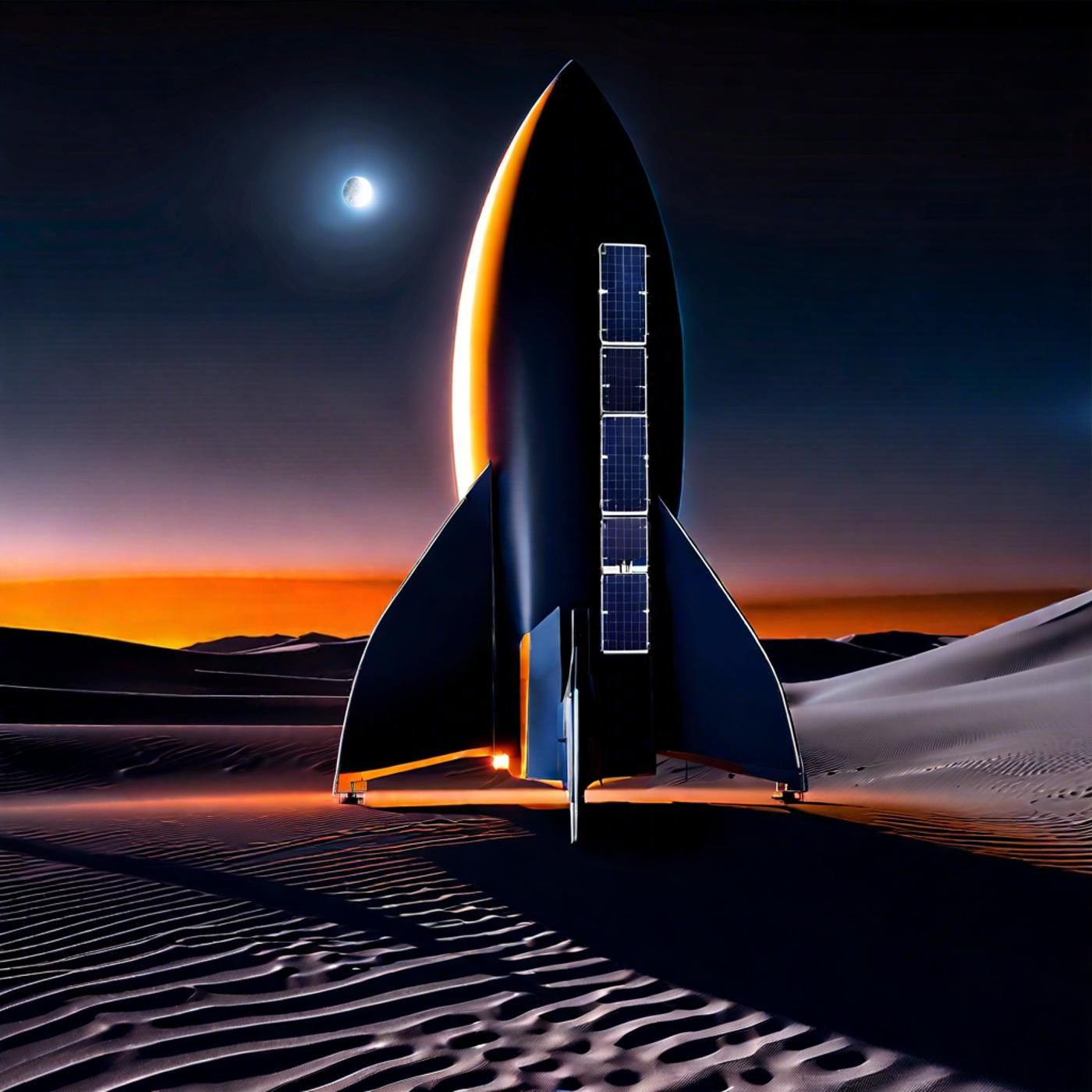S03E69: Starliner's ISS Triumph & Starship's Ocean Splash: Docking Drama and Splashdown Success

Embark on a celestial journey with today's episode of Astronomy Daily - The Podcast, where your host, Anna, guides you through the latest cosmic updates. We'll explore Boeing Starliner crew's challenging yet successful docking with the International...
Embark on a celestial journey with today's episode of Astronomy Daily - The Podcast, where your host, Anna, guides you through the latest cosmic updates. We'll explore Boeing Starliner crew's challenging yet successful docking with the International Space Station and SpaceX's starship nailing its first ocean splashdown. We'll also look at groundbreaking findings from NASA's James Webb Space Telescope and the excitement around a mysterious pit on Mars. Additionally, we'll discuss fascinating research on primordial black holes and their potential role in dark matter, and new insights from ESA's Gaia space telescope on the Milky Way's collision history. Stay tuned as we journey through these cosmic updates.
For an astronomical experience, visit our website at astronomydaily.io for the latest news, sign up for our free newsletter, and check out exclusive sponsor deals. Connect with us on YouTube, TikTok and X (@AstroDailyPod) for engaging discussions with fellow space aficionados. This is Anna, reminding you to keep your gaze fixed on the heavens. Until our next stellar episode, let the cosmos ignite your curiosity and wonder. Clear skies and cosmic discoveries to all!
Support: The podcast is better with your support: https://www.bitesz.com/show/astronomy-daily-the-podcast/support/
www.bitesz.com
Sponsors:
www.bitesz.com/nordpass
https://www.bitesz.com/show/astronomy-daily-the-podcast/sponsors/
This podcast features the latest in space and astronomy news from around the world
Anna: welcome to another episode of Astronomy Daily, the go to podcast for the latest in space and astronomy news. I'm your host, Anna. Today we'll be diving into some fascinating stories from the world beyond our planet. From incredible mission updates to intriguing discoveries, we've got a lot to cover. In this episode, we'll explore Boeing Starliner crew's challenging yet successful docking with the International Space Station and SpaceXs starship nailing its first oceans flashdown. Well also look at groundbreaking findings from NASAS James Webb Space Telescope and the excitement around a mysterious pit on Mars. Additionally, well discuss fascinating research on primordial black holes and their potential role in dark matter, and new insights from ESA's Gaia space telescope on the Milky Way's collision history. Stay tuned as we journey through these cosmic updates.
Boeing's Starliner crew capsule successfully docked with ISS
The Astronomy Daily podcast Boeing's Starliner crew capsule has successfully docked with the International Space Station, marking its first mission carrying astronauts. Despite encountering significant challenges, including thruster malfunctions and helium leaks, the crew is able to overcome these hurdles and safely reach their destination. Crew members Butch Wilmore and SUNY Williams expressed their excitement and readiness to begin their tasks aboard the ISS. We're ready to get to work, declared Wilmore, underscoring the significance of this milestone for Boeing and NASA, who are hopeful this success will pave the way for regular astronaut transport missions to the ISS.
SpaceX Success
SpaceX's colossal starship rocket has made headlines with its first successful ocean splashdown, marking a major milestone in space exploration. This remarkable feat signifies a significant step forward in Elon Musk's ambitious vision of future human missions to Mars. The massive rocket blasted off from SpaceX's starbase in Boca Chica, Texas, and coasted halfway across the globe before descending into the Indian Ocean. Despite some debris shedding and minor damage to the rocket's exterior, the test proved to be a success, demonstrating the reusability of the system, an essential feature for making interplanetary travel more sustainable and cost effective. Musk celebrated the achievement, highlighting the importance of such tests in advancing humanity's future as a space faring civilization.
NASA's James Webb Space Telescope finds 13 carbon bearing compounds around low mass star
NASA's James Webb Space Telescope has made a groundbreaking discovery by identifying a record number of carbon containing molecules around a young, low mass star. This star, known as Isochi 147, is shedding light on the intricate chemistry of planet forming disks. Researchers found a total of 13 different carbon bearing compounds, including ethane, ethylene, and propyne. These molecules are essential for understanding the chemical environment in which new planets form. Given the star's low mass, the implications of this discovery are particularly intriguing as they suggest that planets forming in such environments might have unique chemical compositions. This finding significantly advances our knowledge of how planets develop and what their potential makeups might be, contributing valuable data to the field of astrochemistry. One of the most recent discoveries on Mars has scientists buzzing with curiosity and excitement. NASA's Mars reconnaissance orbiter captured an image of a mysterious pit on the flank of the extinct volcano arcea Mons. This small pit, only a few meters across, has spurred intrigue because it might reveal more than just a simple hole in the ground. Experts propose that this pit could be the entrance to a much larger cavernous or a deep lava tube formed during the volcano's active period. This potential cavern or lava tube could hold significant promise for future martian m exploration. Not only might it provide a sheltered habitat for astronauts, protecting them from the harsh surface conditions and radiation, but it could also harbor clues about past microbial life on Mars. If these pits indeed open into larger cave systems, they could be critical in our quest to understand the red planet's historical geology and its capability to support life. Recent studies suggest that primordial black holes might constitute a fraction of dark matter, a mysterious substance that makes up most of the universe's mass. Unlike typical black holes formed from collapsing stars, primordial black holes originated in the early universe from dense pockets of matter collapsing under their own gravity. These unique black holes may offer insights into the nature of dark matter. Research indicates that these black holes could be detectable through gravitational wave observatories like LIgo, Virgo, and kagra. These facilities have already made significant contributions to our understanding of cosmic events by capturing the gravitational waves emitted during black hole mergers. If primordial black holes are indeed part of dark matter, their mergers could be producing detectable gravitational waves. However, the exact contribution of primordial black holes to the total dark matter content remains a heated topic of ongoing research. While some findings support their presence as a minor component of dark matter, others suggest they could play a more significant role. Continued observations and advancements in gravitational wave detection are crucial for unraveling this cosmic mystery. ESA's Gaia space Telescope has granted us fresh insights into the Milky Way's storied history of cosmic collisions. Recent data has illuminated that a major galactic merger occurred much later than we had previously believed. This significant event, known as the Virgo radial merger, took place less than 3 billion years ago, billions of years more recently than our earlier estimates, which placed it between eight and 11 billion years ago. This cosmic collision has notably reshaped our understanding of how our galaxy evolved over time. Traditionally, we thought that the Milky Way experienced its last major merger in its infancy, but Gaia's high precision data tells a different story. By studying the positions and movements of stars, we now see clearer wrinkles or perturbations in the star field that suggest a more recent disruptive event. The Virgo radial merger brought in not just stars, but also smaller dwarf galaxies and star clusters, which collectively affected the Milky Way's structure and stellar population. This discovery has crucial implications for our models of galactic development, challenging the idea that significant mergers were confined to the ancient history of the Milky Way. Instead, it paints a picture of a more dynamic and evolving galactic environment, continuing to change and grow even in its relatively recent past.
This podcast includes links to today's featured articles
That's all for today's episode of Astronomy Daily. We hope you found these cosmic updates as fascinating as we did. To dive deeper into any of today's stories, and for more in depth articles, be sure to visit our website at astronomydaily IO. We also invite you to connect with us on social media. You can find us on X, formerly known as Twitter, YouTube, and our newly launched TikTok at astrodailypod. It's a bit lonely for us on TikTok at the moment, so please drop by and give us a follow. A, uh, special thanks to our sponsor, Nordpass, for supporting this episode. They offer great deals for our listeners, so check them out for all your password management needs. You'll find link details in the show notes and on our website. Or visit bitesz.com/nordpass You'll be glad you did. Until next time, keep looking up and stay curious. This is Anna signing off from Astronomy daily.
New to Astronomy Daily - The Podcast?
Here are some great episodes to start with.




















